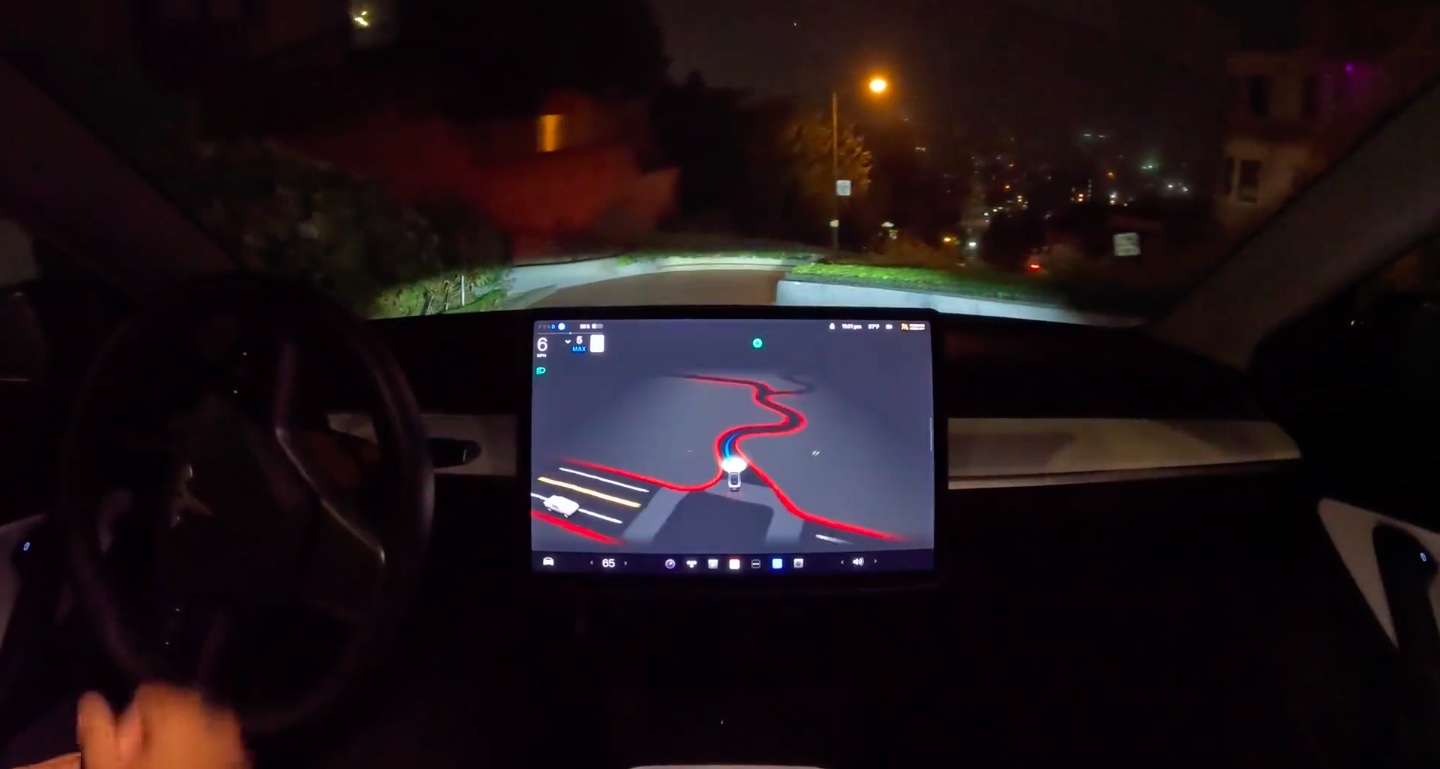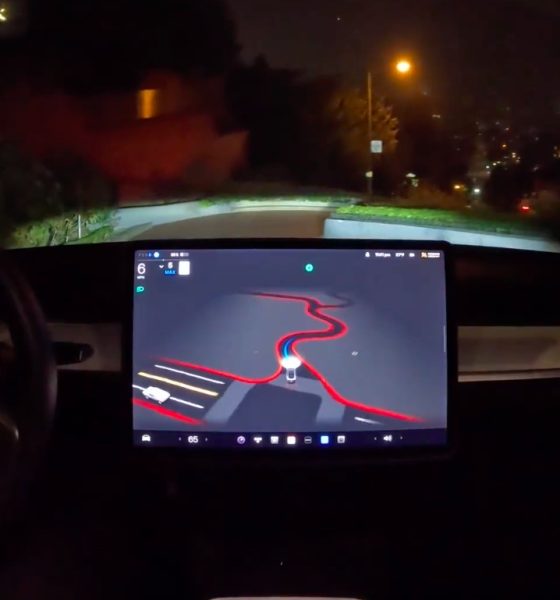

News
Tesla FSD Beta 10.69.2 “looking good” for weekend release + 10.69.1.1 Reviews
Elon Musk shared that Tesla FSD Beta 10.69.2’s release is still set for this weekend.
Tesla initially planned to release v10.69.2 last week but delayed the update to polish it up more. The company rolled out v.10.69.1.1 to more Beta testers instead.
Tesla FSD Beta 10.69.1.1 Reviews
A few Tesla Beta testers who received v10.69.1.1 shared their observations and thoughts about the update with Teslarati. One of the common issues Beta Testers mentioned was phantom braking.
One 2021 Model S owner, Howard, noted that his Tesla vehicle still experienced phantom braking too much. He shared that his Model S drove like a 16-year-old. “Not smooth with the wheel, throttle, or brakes,” he said.
Howard also observed that his Tesla ignored some speed signs, even if they popped up on the display. The Tesla Model S owner added that his car “still fades right into turn lanes when there is not [a] turn to be done. It then swerves to go to the last [turn] it just left.”
Fellow FSD Beta tester, Michael, was “a bit disappointed” with the latest update. He noted experiencing some phantom braking along the Long Island Expressway.
“Can’t seem to figure out the somewhat irregular lines in the HOV lane, which is surprising to me. Oh well….hope for better next time. Still not there, but much better than first experiences,” Michael added.
Impressions from a longtime FSD Beta Tester
FSD Beta tester Les also shared his thoughts about v.10.69.1.1 with Teslarati. Les has been an Early Access software tester since 2018. He was kind enough to break down all his observations from testing FSD Beta 10.69.1.1.
Les mentioned seeing a few issues with FSD Beta that have been around since Fall 2021. Some of the issues are listed below.
- [The] car doesn’t always stay in [the] proper turn lane when using the outer lane of a left dual turn lane scenario; 8/10 times, mid-turn, it will cross over into the inner turn lane. It has done this for me with every FSD Beta build back to October 2021.
- Inconsistent lane selection: my car will still sometimes move[s] into lanes opposite to the next upcoming turn, sometimes when close to that upcoming turn, sometimes missing the turn itself.
- Late turn signals: this is a long-standing issue many testers have reported. The turn signals [usually] activate too late when they need to activate ahead of a turn lane to alert drivers behind us.
Despite the continuing issues he observed, Les seemed to have an overall good experience with the latest update. He specifically highlighted Tesla’s work with Chuck Cook Style’s unprotected left terms which were specifically mentioned in v10.69’s release notes. Listed below are all his good observations about FSD Beta v. 10.69.1.1.
- The improvement to “Chuck Cook style” unprotected left turns with multiple lanes and medians is incredible. The car utilizes the median space very well. [It] feels like more than an improvement. It really almost feels like a feature upgrade. It’s that significant and amazing to experience.
- The car has almost no more phantom braking events for me. I never had many to begin with, certainly not as many severe events as other friends report, but I did notice the ones I had and the places they occurred no longer occurred.
- Traffic turning across my car’s path no longer triggers a cautious braking event when there’s enough room ahead. The car better recognizes the crossing vehicle’s direction and speed, and my car maintains its speed. Very human-like behavior.
- More assertive and smooth acceleration out of turns, especially when entering a higher speed road. Related: improved acceleration from stops. I like this very much, as prior builds often took too long (for my taste anyway) to get up to speed. It still could get up to speed more quickly, but there is [a] notable improvement.
- The dashcam bug has been eliminated!! The prior build would routinely crash the dashcam after I parked and/or charged, requiring either a computer reboot or removal/reinsertion of [the] dashcam thumb drive to fix. No more problems!
In general, Tesla is steadily improving FSD Beta with each update. And Testers are actively experiencing those improvements. However, Tesla’s Full Self-Driving suite still needs more work before it rolls out to the public.
Are you an FSD Beta tester? I’d like to hear your thoughts on v10.69.2! Contact me at maria@teslarati.com or via Twitter @Writer_01001101.

News
Tesla FSD fleet is nearing 7 billion total miles, including 2.5 billion city miles
As can be seen on Tesla’s official FSD webpage, vehicles equipped with the system have now navigated over 6.99 billion miles.

Tesla’s Full Self-Driving (Supervised) fleet is closing in on almost 7 billion total miles driven, as per data posted by the company on its official FSD webpage.
These figures hint at the massive scale of data fueling Tesla’s rapid FSD improvements, which have been quite notable as of late.
FSD mileage milestones
As can be seen on Tesla’s official FSD webpage, vehicles equipped with the system have now navigated over 6.99 billion miles. Tesla owner and avid FSD tester Whole Mars Catalog also shared a screenshot indicating that from the nearly 7 billion miles traveled by the FSD fleet, more than 2.5 billion miles were driven inside cities.
City miles are particularly valuable for complex urban scenarios like unprotected turns, pedestrian interactions, and traffic lights. This is also the difference-maker for FSD, as only complex solutions, such as Waymo’s self-driving taxis, operate similarly on inner-city streets. And even then, incidents such as the San Francisco blackouts have proven challenging for sensor-rich vehicles like Waymos.
Tesla’s data edge
Tesla has a number of advantages in the autonomous vehicle sector, one of which is the size of its fleet and the number of vehicles training FSD on real-world roads. Tesla’s nearly 7 billion FSD miles then allow the company to roll out updates that make its vehicles behave like they are being driven by experienced drivers, even if they are operating on their own.
So notable are Tesla’s improvements to FSD that NVIDIA Director of Robotics Jim Fan, after experiencing FSD v14, noted that the system is the first AI that passes what he described as a “Physical Turing Test.”
“Despite knowing exactly how robot learning works, I still find it magical watching the steering wheel turn by itself. First it feels surreal, next it becomes routine. Then, like the smartphone, taking it away actively hurts. This is how humanity gets rewired and glued to god-like technologies,” Fan wrote in a post on X.
News
Tesla starts showing how FSD will change lives in Europe
Local officials tested the system on narrow country roads and were impressed by FSD’s smooth, human-like driving, with some calling the service a game-changer for everyday life in areas that are far from urban centers.

Tesla has launched Europe’s first public shuttle service using Full Self-Driving (Supervised) in the rural Eifelkreis Bitburg-Prüm region of Germany, demonstrating how the technology can restore independence and mobility for people who struggle with limited transport options.
Local officials tested the system on narrow country roads and were impressed by FSD’s smooth, human-like driving, with some calling the service a game-changer for everyday life in areas that are far from urban centers.
Officials see real impact on rural residents
Arzfeld Mayor Johannes Kuhl and District Administrator Andreas Kruppert personally tested the Tesla shuttle service. This allowed them to see just how well FSD navigated winding lanes and rural roads confidently. Kruppert said, “Autonomous driving sounds like science fiction to many, but we simply see here that it works totally well in rural regions too.” Kuhl, for his part, also noted that FSD “feels like a very experienced driver.”
The pilot complements the area’s “Citizen Bus” program, which provides on-demand rides for elderly residents who can no longer drive themselves. Tesla Europe shared a video of a demonstration of the service, highlighting how FSD gives people their freedom back, even in places where public transport is not as prevalent.
What the Ministry for Economic Affairs and Transport says
Rhineland-Palatinate’s Minister Daniela Schmitt supported the project, praising the collaboration that made this “first of its kind in Europe” possible. As per the ministry, the rural rollout for the service shows FSD’s potential beyond major cities, and it delivers tangible benefits like grocery runs, doctor visits, and social connections for isolated residents.
“Reliable and flexible mobility is especially vital in rural areas. With the launch of a shuttle service using self-driving vehicles (FSD supervised) by Tesla in the Eifelkreis Bitburg-Prüm, an innovative pilot project is now getting underway that complements local community bus services. It is the first project of its kind in Europe.
“The result is a real gain for rural mobility: greater accessibility, more flexibility and tangible benefits for everyday life. A strong signal for innovation, cooperation and future-oriented mobility beyond urban centers,” the ministry wrote in a LinkedIn post.
News
Tesla China quietly posts Robotaxi-related job listing
Tesla China is currently seeking a Low Voltage Electrical Engineer to work on circuit board design for the company’s autonomous vehicles.

Tesla has posted a new job listing in Shanghai explicitly tied to its Robotaxi program, fueling speculation that the company is preparing to launch its dedicated autonomous ride-hailing service in China.
As noted in the listing, Tesla China is currently seeking a Low Voltage Electrical Engineer to work on circuit board design for the company’s autonomous vehicles.
Robotaxi-specific role
The listing, which was shared on social media platform X by industry watcher @tslaming, suggested that Tesla China is looking to fill the role urgently. The job listing itself specifically mentions that the person hired for the role will be working on the Low Voltage Hardware team, which would design the circuit boards that would serve as the nervous system of the Robotaxi.
Key tasks for the role, as indicated in the job listing, include collaboration with PCB layout, firmware, mechanical, program management, and validation teams, among other responsibilities. The role is based in Shanghai.
China Robotaxi launch
China represents a massive potential market for robotaxis, with its dense urban centers and supportive policies in select cities. Tesla has limited permission to roll out FSD in the country, though despite this, its vehicles have been hailed as among the best in the market when it comes to autonomous features. So far, at least, it appears that China supports Tesla’s FSD and Robotaxi rollout.
This was hinted at in November, when Tesla brought the Cybercab to the 8th China International Import Expo (CIIE) in Shanghai, marking the first time that the autonomous two-seater was brought to the Asia-Pacific region. The vehicle, despite not having a release date in China, received a significant amount of interest among the event’s attendees.








